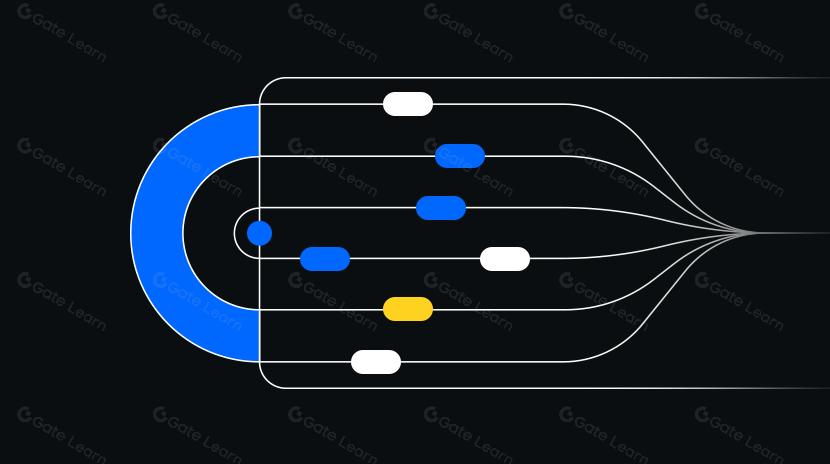bitcoin depth chart

Bitcoin Depth Chart is a visualization tool that displays the distribution of buy (bid) and sell (ask) orders in a cryptocurrency exchange's order book. It visually represents market liquidity across specific price ranges, helping traders understand current market supply and demand dynamics. The depth chart plots price on the horizontal axis and cumulative order volume on the vertical axis, typically showing buy depth on the left side (green) and sell depth on the right side (red). This tool is valuable for understanding market sentiment, identifying support and resistance levels, and assessing potential price slippage when executing large trades.
What are the key features of Bitcoin Depth Chart?
Bitcoin Depth Charts visualize market structure with these core characteristics:
Liquidity Distribution: Depth charts show market liquidity at different price levels, with steeper cumulative curves indicating greater liquidity in that price region.
Price Resistance and Support: Thicker "walls" on the chart represent large concentrations of orders at specific price points, potentially forming temporary price support or resistance levels.
Market Imbalance: Differences in depth between buy and sell sides can reflect market sentiment bias, for example, significantly larger sell depth than buy depth might suggest bearish sentiment dominance.
Signs of Market Manipulation: Sudden appearances of large order walls can sometimes indicate market manipulation attempts, as these orders may be canceled as price approaches them.
Execution Probability: Depth charts help traders assess whether large orders can be executed close to current market prices or if insufficient liquidity will cause significant price slippage.
What is the market impact of Bitcoin Depth Chart?
Beyond being a trading tool, Bitcoin Depth Charts have profound impacts on the broader market:
Market Transparency: Depth charts enhance market transparency, allowing all participants to see current order conditions equally, contributing to more efficient markets.
Trading Strategy Development: Professional traders and algorithmic trading systems often utilize depth chart data to optimize trade execution and reduce market impact costs.
Liquidity Assessment: Institutional investors considering Bitcoin market entry refer to depth charts to evaluate whether the market can accommodate their transaction sizes.
Cross-Exchange Arbitrage: Since liquidity distribution and depth chart patterns vary across exchanges, arbitrageurs use these differences to design trading strategies.
Market Sentiment Indicator: Analysts frequently use depth charts as an important market sentiment indicator, combining them with other technical indicators to predict short-term price movements.
What are the risks and challenges of Bitcoin Depth Chart?
Despite being a valuable tool, depth charts come with several risks and limitations that users should be aware of:
Hidden Orders: Some exchanges allow setting hidden orders that don't appear in the order book, meaning depth charts may not reflect the true market depth.
Dynamic Changes: Order books can change dramatically in moments, especially during high volatility periods or significant news events, making depth chart snapshots quickly outdated.
Fake Liquidity: Certain market participants may create an illusion of liquidity by frequently adding and removing orders, a practice known as "spoofing."
Exchange Differences: Depth charts can vary significantly between exchanges, and a single exchange's depth chart cannot represent the entire Bitcoin market's true condition.
Interpretation Complexity: For novice traders, correctly interpreting depth charts requires experience and knowledge, and misinterpretation can lead to poor trading decisions.
Data Latency: During network congestion or high exchange system loads, depth chart data may experience delays, affecting its usefulness.
Bitcoin depth charts are powerful market analysis tools, but should be used as part of a broader trading strategy rather than as standalone indicators. For traders of all levels, understanding and properly using depth charts can enhance trading decision quality and market awareness depth.
Share
Related Articles

In-depth Explanation of Yala: Building a Modular DeFi Yield Aggregator with $YU Stablecoin as a Medium

Exploring 8 Major DEX Aggregators: Engines Driving Efficiency and Liquidity in the Crypto Market
